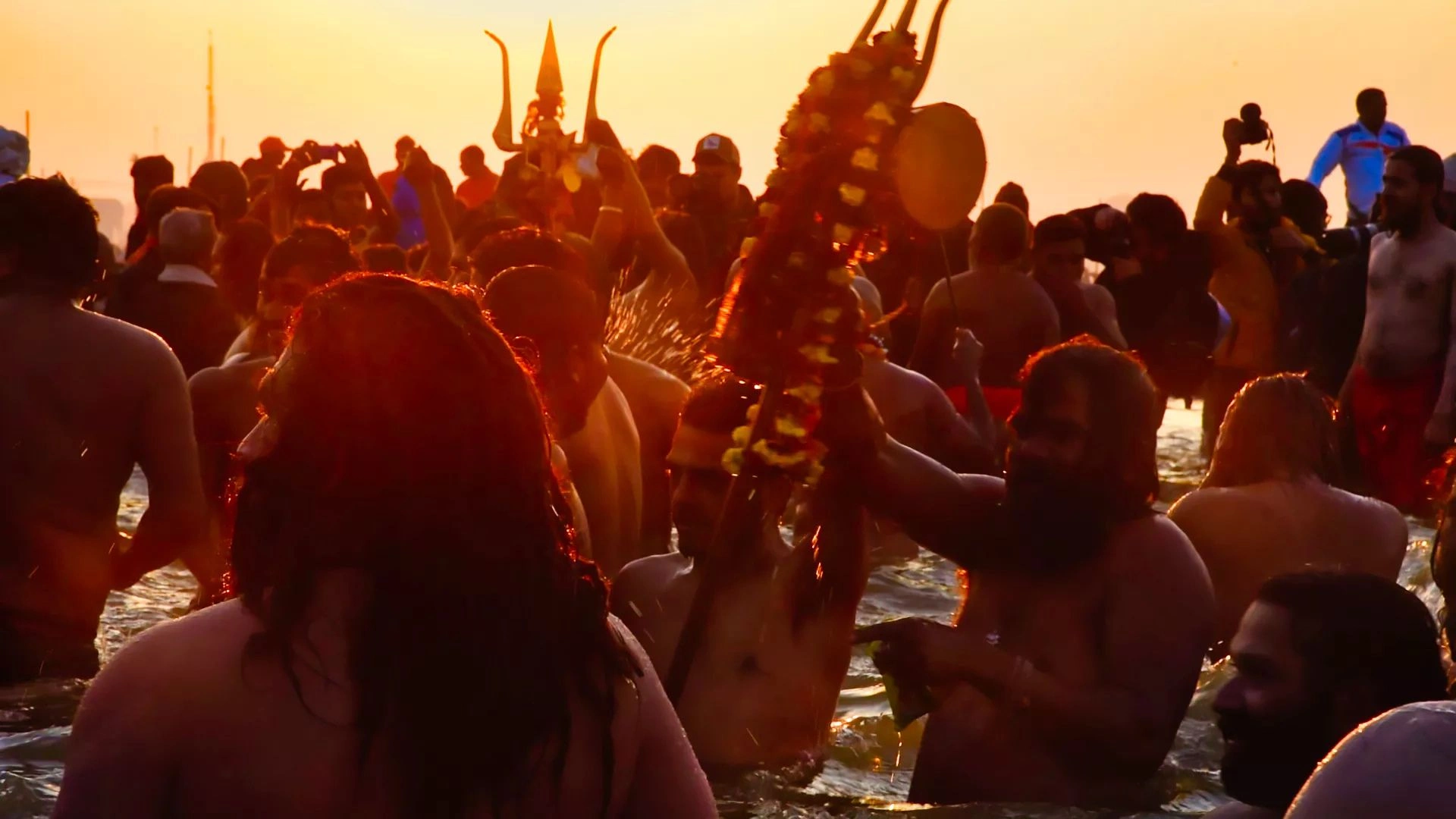The Mahakumbh, also known as the Maha Kumbh Mela, is a sacred Hindu festival that draws millions of devotees from across the globe to bathe in the holy rivers of India. It is one of the largest religious gatherings in the world and is celebrated every 12 years at four different locations in India—Allahabad (Prayagraj), Haridwar, Nashik, and Ujjain. The origins of the Mahakumbh can be traced back to ancient Hindu mythology, where the event symbolizes a divine convergence of the celestial and earthly realms.
Mythological Origins
The roots of the Mahakumbh lie in Hindu mythology, particularly the tale of the “Samudra Manthan” or the churning of the ocean. According to legend, the gods and demons collaborated to churn the ocean of milk (Ksheer Sagar) to obtain the nectar of immortality, “amrit.” During this churning, a pot (kumbh) containing the amrit emerged from the depths of the ocean. As the gods and demons fought over the nectar, four drops of amrit fell at four sacred locations on earth—Prayagraj, Haridwar, Nashik, and Ujjain. It is said that these locations became the venues for the Kumbh Mela, where devotees gather to bathe in the waters and purify their souls, seeking divine blessings.
The Cycle of the Kumbh Mela
The Maha Kumbh occurs once every 12 years, and each of the four locations hosts a Kumbh Mela every three years, creating a 12-year cycle. The significance of the number 12 stems from astrological beliefs, where it is believed that the planet Jupiter enters the zodiac sign of Aquarius once every 12 years, aligning with the timing of the Maha Kumbh. The festival’s timing and location are chosen based on the positions of celestial bodies, further emphasizing its deep-rooted spiritual and astrological significance.
The Kumbh Mela is not just a celebration but a spiritual pilgrimage. For Hindus, it is believed that taking a holy dip in the waters during the Maha Kumbh can wash away sins, leading to liberation (moksha). The festival attracts sadhus, saints, and holy men, who come together to offer prayers, meditate, and engage in sacred rituals. The mela is a time for reflection, renewal, and devotion, bringing people from diverse backgrounds together in search of peace, spirituality, and a connection with the divine.
Cultural and Global Impact
The Mahakumbh is not only a religious event but also a reflection of India’s cultural richness. The event has evolved over centuries and now includes spiritual discourses, cultural programs, and exhibitions. It serves as a melting pot of various religious, cultural, and social practices. With advancements in travel and communication, the Kumbh Mela has also gained international attention, drawing tourists and scholars alike to witness the massive congregation and understand its significance.
In conclusion, the Mahakumbh is a fusion of mythology, astrology, and spirituality, embodying the timeless connection between the material and spiritual worlds. It is a celebration of faith, devotion, and humanity’s eternal quest for divine connection. With its grand scale and profound meaning, the Maha Kumbh remains one of the most awe-inspiring and spiritually transformative events in the world.
ALSO READ: What First-Time Visitors Need To Know For Maha Kumbh 2025

















